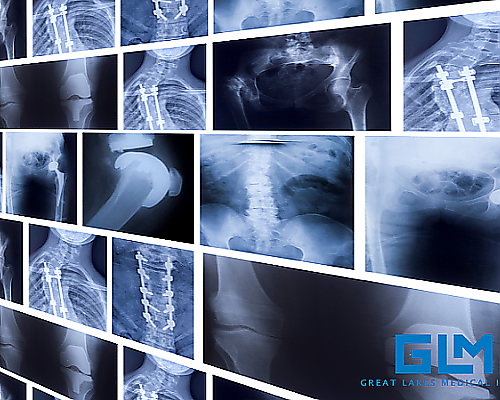Our Blog
How Can Diagnostic Imaging Help Differentiate Between Migraines and Other Neurological Disorders?

Migraines are one of the most common neurological conditions, affecting millions of Americans every year. However, not all headaches are migraines—and some may be linked to more serious neurological disorders such as brain tumors, aneurysms, or multiple sclerosis. For patients in Buffalo and Western New York, advanced diagnostic imaging at Great Lakes Medical Imaging (GLMI) plays a vital role in distinguishing between benign migraines and potentially dangerous conditions requiring immediate treatment.
Why Differentiating Migraine from Other Neurological Conditions Matters
Most migraines, while painful, are not life-threatening. However, neurological symptoms such as sudden vision changes, weakness, or severe headaches can also indicate underlying conditions like strokes, structural abnormalities, or infections. Accurate diagnosis is essential for determining whether symptoms are related to chronic migraine or require urgent intervention.
Imaging tests allow physicians to visualize the brain and surrounding structures to identify abnormalities that might mimic migraine symptoms, ensuring patients receive the right care at the right time.
When Should Imaging Be Considered for Headaches?
Not every headache requires an MRI or CT scan, but certain warning signs—often called “red flags”—warrant immediate imaging. You should consult your provider if you experience:
- Sudden, severe headaches (“thunderclap headaches”)
- Headaches accompanied by neurological symptoms (weakness, numbness, confusion)
- New-onset headaches after age 50
- Headaches following trauma or injury
- Headaches that progressively worsen or change pattern over time
Discussing these symptoms with your provider ensures timely referral for the appropriate imaging study.
Types of Imaging Used to Evaluate Headaches
GLMI offers several imaging modalities to assist in diagnosing neurological conditions that present with migraine-like symptoms:
MRI (Magnetic Resonance Imaging)
MRI scans are the gold standard for evaluating brain structures in detail. They can detect tumors, multiple sclerosis lesions, small strokes, and other abnormalities that may not appear on a CT scan. MRI is particularly valuable for patients with unexplained chronic headaches or neurological changes.
CT Scan (Computed Tomography)
CT scans provide fast imaging and are often used in emergency situations where speed is critical, such as suspected hemorrhages or acute strokes. They are also useful when MRI is contraindicated due to implanted devices or claustrophobia.
Nuclear Medicine Studies
In specific cases, nuclear imaging can assess brain activity or blood flow patterns, helping differentiate types of neurological disorders that mimic migraines.
How Imaging Helps Rule Out Serious Conditions
Diagnostic imaging allows physicians to confirm whether a patient’s headaches are due to migraines or another cause. Examples include:
- Brain tumors: MRI can identify even small growths that may cause headache and visual changes.
- Aneurysms: CT angiography or MR angiography can detect bulging blood vessels at risk of rupture.
- Multiple sclerosis: MRI reveals characteristic lesions in the brain and spinal cord.
- Sinus or vascular issues: CT scans can reveal sinus infections or blocked blood vessels contributing to pain.
By ruling out these possibilities, providers can confidently diagnose migraines and tailor treatment without unnecessary concern for more serious conditions.
Comprehensive Neurological Imaging in Buffalo and Western NY
At GLMI, we provide comprehensive neurological imaging with advanced equipment and compassionate care. Our board-certified radiologists work closely with neurologists and primary care providers to interpret results quickly and accurately. Patients benefit from:
- Access to high-field MRI for detailed brain imaging
- Low-dose CT for emergency or acute evaluations
- Multiple convenient outpatient locations, including Williamsville, Cheektowaga, and Orchard Park
- Faster scheduling and shorter wait times than hospital imaging centers
Integrating Imaging into Your Migraine Care Plan
If imaging rules out serious causes, your provider can focus on migraine-specific treatments such as medication, lifestyle changes, or neurology referral. For those diagnosed with other conditions, imaging provides the roadmap for urgent treatment or further specialist care.
Schedule Your Neurological Imaging at GLMI
If you’ve been experiencing migraines with concerning symptoms or your provider recommends further evaluation, contact GLMI today to schedule your imaging test. Our experienced team is here to deliver fast answers and peace of mind for patients throughout Buffalo and Western New York.
Medical Disclaimer: This article is for informational purposes only and should not replace medical advice. Always consult your physician or a qualified healthcare provider about symptoms, diagnoses, and appropriate testing options.
‹ Back









